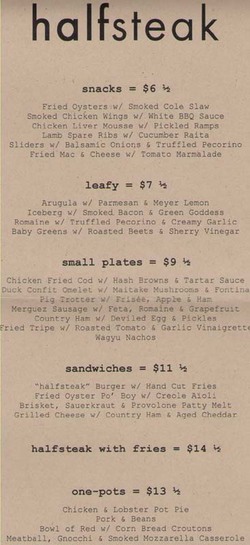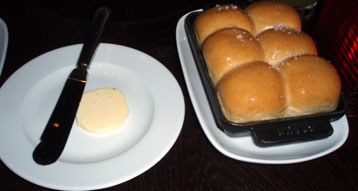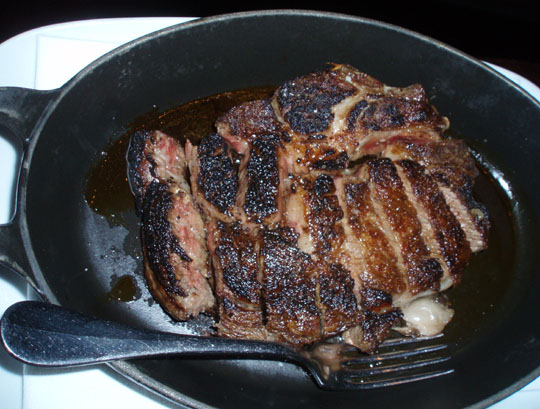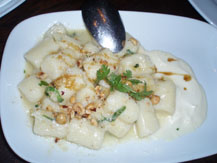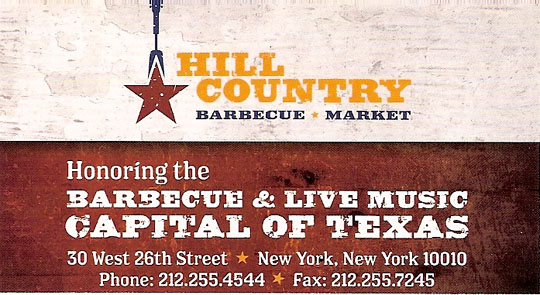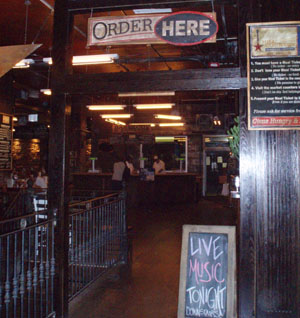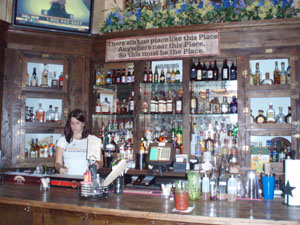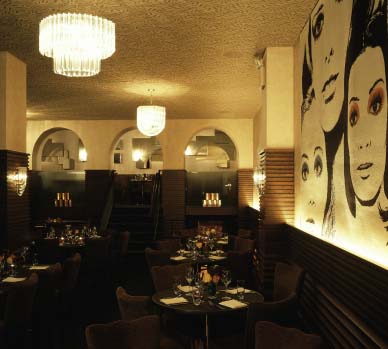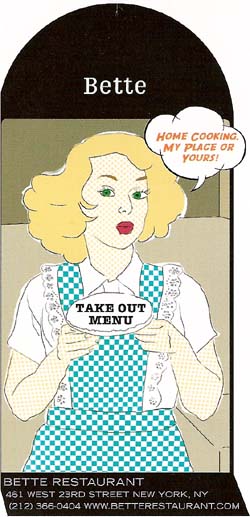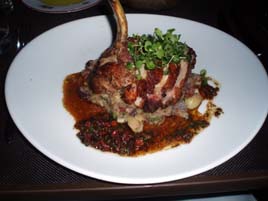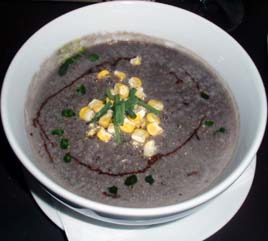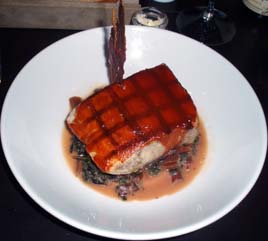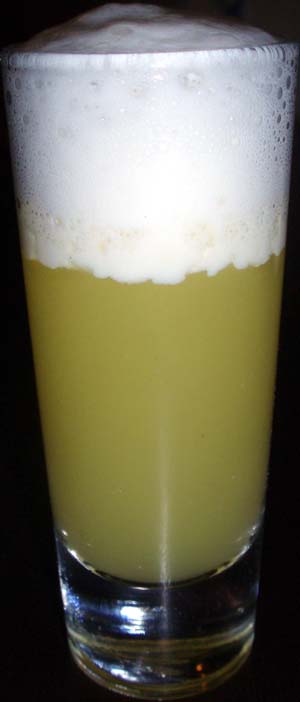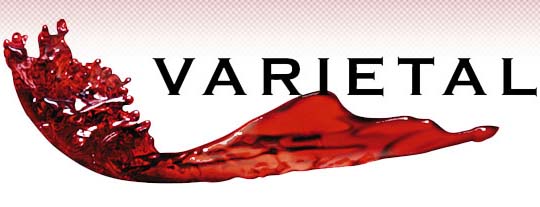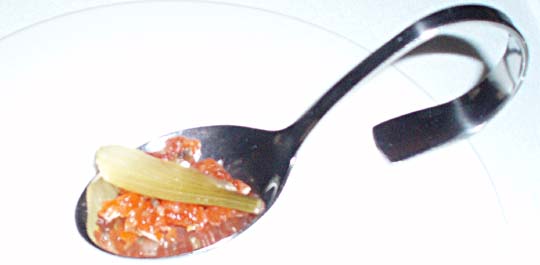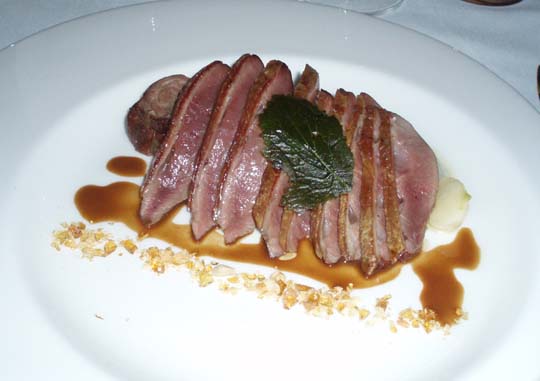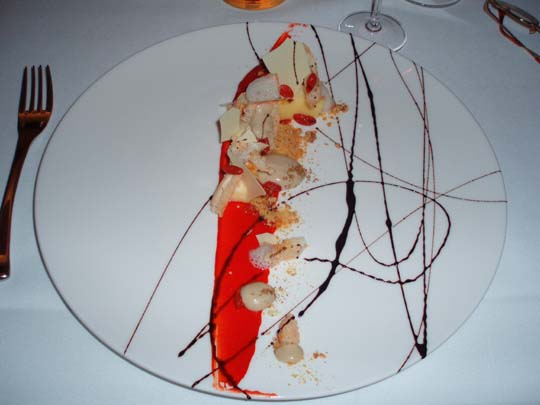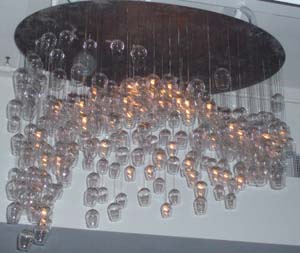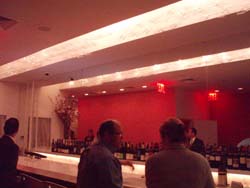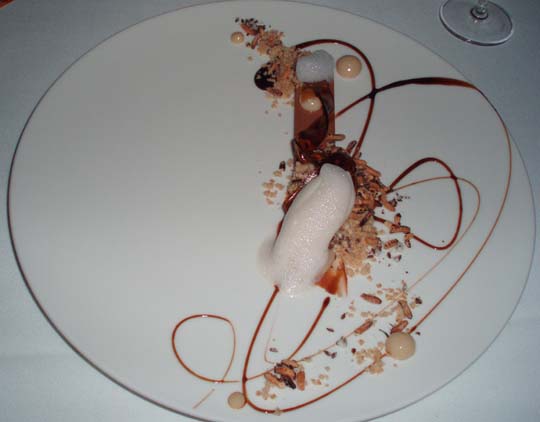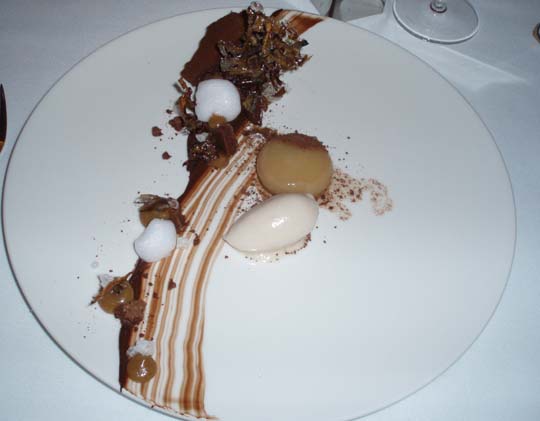Halfsteak
 Saturday, February 14, 2009 at 11:26AM
Saturday, February 14, 2009 at 11:26AM 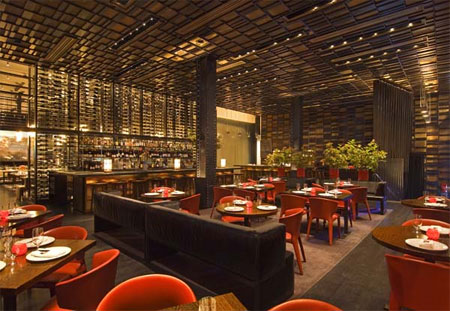
Note: Halfsteak, along with is parent restaurant Craftsteak, closed in late 2009. A new restaurant from the same team, Colicchio & Sons, replaced it in early 2010.
*
Not a week goes by without further retrenchment in the restaurant industry. Even Tom Colicchio’s sainted Craft empire is hunkering down for a long recession. This week, the front room at Craftsteak rebranded itself “Halfsteak,” where every dish is under $15.
I’ve visited Craftsteak three times (1, 2, 3), but I’ve been wholly satisfied only once. To be fair, the first two visits were early on, before Colicchio fired the executive chef and bought new broiling equipment. But I continue to read mixed reports, suggesting a visit to Craftsteak is very much a crapshoot. It’s a tough value proposition for a place where almost all steaks are above $50.
I’m not visiting many steakhouses these days. Even if I was, I’d have to think twice before returning to Crafsteak. But the sub-$15 menu at Halfsteak has my attention. This is a place where one doesn’t mind just “dropping in.”
Halfsteak occupies the casual front dining room at Craftsteak. Everything is priced at odd multiples of a half-dollar. Snacks are $6½, salads $7½, small plates $9½, sandwiches $11½, “one-pots” $13½, desserts $4½, and the namesake halfsteak with fries is $14½. [Click on the menu for a larger image.]
The concept extends to cocktails ($7½), half pints of beer ($3½) and wines by the glass ($10½). Even the notoriously exorbitant wine list has been dialed down. There are twenty bottles on offer, all $55 or less (most under $50). The beers are thoughtful choices from small, artisanal producers; not Budweiser and Schlitz.
Craftsteak’s chef de cuisine is Shane McBride. As he did at his short-lived midtown chophouse 7Square, he isn’t afraid to challenge his audience. I am quite sure that fried tripe is not on this menu because there was overwhelming demand for it. Likewise brisket with sauerkraut or a duck confit omelet.


I wasn’t too hungry, so I ordered just two snacks ($6.50 ea.), the Smoked Chicken Wings with White BBQ Sauce (above left) and the Lamb Spare Ribs with Cucumber Raita (above right). The wings were wonderful, perfectly seasoned and slightly spicy. Where on earth did that white barbecue sauce come from? The lamb ribs were slightly dry and not quite warm enough. Total bill with two half-pints of beer: $20.
The restaurant’s two-star service model hasn’t changed. I almost laughed when I asked for a wet-nap to wash my hands after all that finger food, and they brought out a hot towel. Both the main dining room and the front room were doing a respectable business, but neither was full between 7 and 8pm on a Thursday evening.
The current recession has taken its sad toll on many restaurants, but among those that remain open there are many good deals to be had. Halfsteak is one of the best around.
“Halfsteak” (85 Tenth Avenue at 15th Street, Far West Chelsea)


